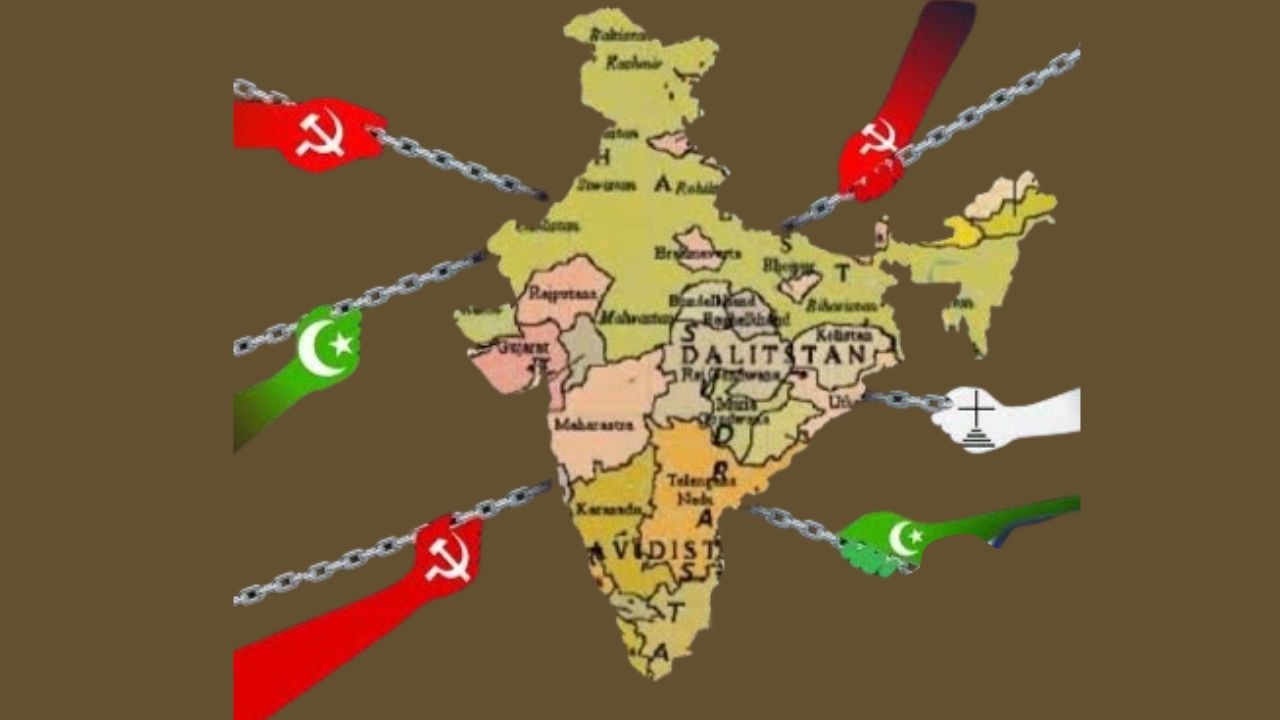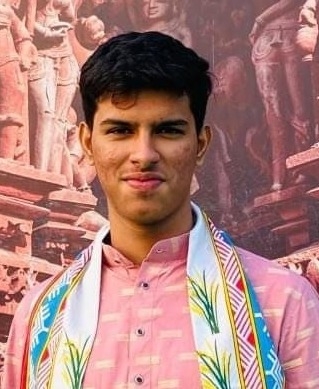The General Theory of Conflict : Caste as a Special Case
Communism, as defined by Karl Marx, divides society into two main groups: the oppressors and the oppressed. The fundamental goal of communism is to eliminate the class and create a classless society but it always failed whenever applied practically

Communism, as defined by Karl Marx, divides society into two main groups: the oppressors and the oppressed. The fundamental goal of communism is to eliminate the class and create a classless society but it always failed whenever applied practically.
However, India’s societal structure is notably complex. Historically, people found contentment in their roles and earnings, adhering to traditional values. Yet, societal evolution over time introduced new classes, which did not harmonize well with India’s cultural and social fabric. Factors such as colonial influence and the evolution of the caste system have contributed to the communists to define these as the classes.
Historical Context and the Varna System
The Brihadaranyaka Upanishad provides insights into the origin of the four varnas in ancient India. According to this text, Brahma initially existed alone and found himself unable to perform productive actions. To solve this, Brahma created the Brahmins to specialize in intellectual and spiritual pursuits. Recognizing the need for diverse skills in society, Brahma then formed the Kshatriyas for governance and protection, followed by the Vaishyas and the Shudras who provided essential services.
The varna system originated not as a rigid hierarchy but as a simplification of labor tailored to societal needs and individual aptitudes. It was fluid, with individuals moving between varnas based on their abilities and occupation. Originally, everyone likely participated in similar work such as agriculture. However, as society advanced, specialization emerged, with individuals excelling in specific crafts like tool-making or weather prediction. This Arrangement encouraged each person to contribute uniquely to the collective progress and development of society.
The Mughal Era to British Colonialism
During the colonial period in India, both the Mughal Empire and later British colonial rule significantly impacted the caste system through administrative policies. The Mughal era did not dismantle the existing caste system but rather integrated it into the social and administrative structure of the empire. Despite the Islamic beliefs of the Mughals, caste identities continued to play a significant role in society.
Subsequently, under British colonial rule starting from the 18th century, the caste system was further codified and reinforced through administrative measures. Caste identities were documented in official records, and specific jatis were categorized based on administrative convenience and colonial interests. This period witnessed the formalization and solidification of caste-based hierarchies, deepening social divisions and reinforcing existing inequalities within Indian society under colonial governance.
Communism's Interpretation of Caste
After the colonial era in India, the arrival of communism brought forth a vision of establishing a classless society through revolution, where the oppressed would rise against their oppressors. Indian communists adapted Marxist ideology by equating the post-colonial caste system with the concept of class, aligning with their revolutionary narrative. Following India’s independence, they highlighted and perpetuated the divisions inherited from British colonial rule, categorizing society into ‘upper’ and ‘lower’ classes, thereby introducing a new dichotomy. Indian communists aimed to reinterpret the traditional caste divisions through the lens of class struggle, identifying ‘Brahmins’,‘Kshatriya’ and other upper class as the ‘bourgeoisie’ and the lower class as the ‘proletariat.’
Contemporary Political Landscape and Class Dynamics
In modern Indian politics, certain political parties have strategically employed Marxist ideology centered on class struggle to garner support and advance their agendas. The Bahujan Samaj Party (BSP) and the Samajwadi Party (SP) have historically aligned themselves with specific caste groups, drawing on Marxist notions of class identity. Meanwhile, the Aam Aadmi Party (AAP) creating a new class has positioned itself as a representative of the middle class, adopting a class-based narrative reminiscent of Marxist principles. While this approach may be effective for political gain, such a reliance on class-based divisions is not conducive to a healthy democracy in India. It can perpetuate societal divisions and hinder efforts towards genuine inclusivity and equality in the political landscape, undermining the principles of democratic governance.
Nowadays, the Indian National Congress (INC), with its widespread national reach, seems focused primarily on gaining power at the central level of government. This pursuit has led the INC to collaborate with communist ideologies in perpetuating a divisive narrative that emphasizes caste-based divisions within society. Initiatives such as advocating for a caste census and portraying industrialists as oppressors are viewed as strategies aimed at inciting a revolutionary sentiment. This approach appears geared not only towards electoral victory but also towards instigating a societal revolution aligned with communist principles.
The Narrative of Division and the Role of INC
The narrative of class struggle in India, as propagated by the Indian National Congress (INC) in collaboration with communist parties, is viewed as highly detrimental. The INC's advocacy for a caste census is seen as an effort to solidify and exploit caste divisions for political advantage. The narrative of oppression, promoted during Congress rallies, is perceived as a tactic aimed at culturally and morally dividing India at its core.
This approach by the Congress party is seen as a departure from the principles espoused by Mahatma Gandhi, who emphasized unity and social harmony. Instead of fostering national cohesion, the INC's actions risk further dividing Bharat (India) along class lines, contradicting the vision of a unified and egalitarian society championed by Gandhi. This shift in narrative and strategy undermines the legacy of Mahatma Gandhi and threatens to perpetuate societal divisions rather than promoting inclusive progress.
The Communist Agenda
The ultimate goal of these narratives is not simply to win the 2024 elections but to orchestrate a successful revolution against the government, with the aim of establishing a classless society. This perspective perceives the actions of the Indian National Congress (INC) and communist parties as part of a calculated strategy to sow unrest and division within Indian society.
It is increasingly evident that the left-wing factions are engaging in tactics to distract and destabilize the government, paving the way for a larger and potentially harmful agenda. This agenda, if realized, could have profound consequences not only for the democratic process but also for the overall strength and stability of the country. By fostering discord and pursuing disruptive strategies, these groups risk undermining the democratic foundations of India and weakening its societal fabric. Such actions are viewed as a serious threat to the integrity and well-being of the nation.
Diagnosis and Treatment: Countering the Narrative
To effectively counter these divisive narratives, it is imperative to diagnose and address the spread of misinformation and propaganda that exacerbate social divisions and unrest. Fostering a meaningful dialogue that transcends caste and class lines is essential in promoting unity, empathy, and mutual understanding among all segments of society. Strengthening the cultural and moral fabric of the nation is crucial in combating divisive forces and safeguarding the integrity of the Nation.
It is important to recognize that countering these challenges is not a quick battle but a sustained effort over time. No single action or strategy alone can win this long-term war against division and misinformation. Instead, it requires ongoing commitment, patience, and collective participation from all stakeholders to foster lasting unity and harmony within the diverse fabric of Indian society.
----------------
References
1. Bṛhadāraṇyaka Upaniṣad (बृहदारण्यक उपनिषद्) 1.4.11 to 1.4.13
2. ṛgveda (ऋग्वेद) 10.90.12
2. Karl Marx and Friedrich Engels, The Communist Manifesto, First Published in 1848.
3. “Strategy & Tactics of the Indian Revolution”, Central Committee (P) of the CPI (Maoist), As adopted at the 9th Congress of the Party in 2001, published on 21st September 2004.
4. “Quotations From Chairman Mao Tse-Tung (or The Little Red Book)”, First published in 1966 by Peking Foreign Language Press, E-Book format - 2019 by David Quentin & Brian Baggins for the Marxists Internet Archive.
5. "If We Want a New Paradigm of Development Where Everyone Gets Justice, We Will Have to Conduct Caste Census." Indian National Congress; https://www.inc.in/congress-sandesh/national/if-we-want-a-new-paradigm-of-development-where-everyone-gets-justice-we-will-have-to-conduct-caste-census.
6. "Bahujan Samaj Party (BSP) - Details, History, Symbol, Party Structure, Leadership." Elections.in, https://www.elections.in/political-parties-in-india/bahujan-samaj-party.html.
7. "Indian Caste System." LibreTexts, https://socialsci.libretexts.org/Bookshelves/Anthropology/Cultural_Anthropology/Cultural_Anthropology_%28Evans%29/11%3A_Politics_and_Culture/11.07%3A_Indian_Caste_System
-------------------------------
Article by
Anvit Dixit
Younginker
Anvit Dixit is a university student. After completing Diploma in Acting, he is now pursuing BA Hons from Amity University, Noida. Basically he is a science student, but his interest in social studies and the false narratives prevalent in our society have taken him to the field of critical social thinking.


